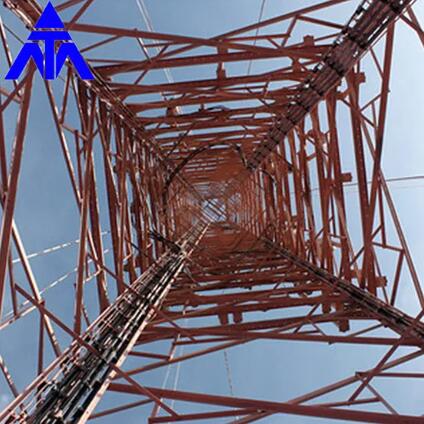Understanding Communication Tower Angle Steel Lattice Towers: Design, Benefits, and Applications
2024-08-28
Communication towers play a crucial role in modern telecommunications, providing the necessary infrastructure for transmitting signals over long distances. Among the various types of communication towers, the angle steel lattice tower stands out due to its robust design and structural efficiency. In this blog, we will explore the design features, benefits, and applications of angle steel lattice towers, shedding light on why they are a popular choice in the telecommunications industry.
1. What is an Angle Steel Lattice Tower?
An angle steel lattice tower is a type of communication tower constructed using angle steel members arranged in a lattice framework. The design features a series of interconnected steel angles forming a geometric lattice structure. This lattice arrangement provides strength and stability while minimizing material usage. Key components of an angle steel lattice tower include:
- Base Plate: The foundation of the tower, which provides stability and distributes the load to the ground.
- Legs: Vertical steel members that form the primary load-bearing structure of the tower.
- Bracing: Diagonal and horizontal steel members that connect the legs and provide additional stability.
- Platforms and Mounts: Sections where communication equipment, such as antennas and transmission lines, are mounted.
2. Design Features and Advantages
The design of angle steel lattice towers offers several advantages:
- Structural Efficiency: The lattice design allows for efficient load distribution and high strength-to-weight ratio. This means the tower can support heavy communication equipment while using less material compared to solid structures.
- Flexibility and Modularity: Angle steel lattice towers are highly customizable and can be adapted to various heights and configurations. This modularity makes them suitable for different communication needs and terrains.
- Durability: Steel is known for its durability and resistance to environmental factors. Angle steel lattice towers are designed to withstand harsh weather conditions, including high winds, snow, and temperature fluctuations.
- Cost-Effectiveness: The use of angle steel and the lattice design reduce material costs and simplify construction. Additionally, the towers’ longevity and low maintenance requirements contribute to overall cost savings.
3. Applications of Angle Steel Lattice Towers
Angle steel lattice towers are used in a variety of applications, including:
- Telecommunications: These towers are commonly used for cellular networks, radio broadcasting, and television transmission. Their height and structural integrity make them ideal for supporting antennas and other communication equipment.
- Broadcasting: Television and radio broadcasters use angle steel lattice towers to transmit signals over long distances, ensuring wide coverage and signal strength.
- Weather Stations: The towers are also used to support weather monitoring equipment and sensors, providing critical data for weather forecasting and climate studies.
- Emergency Services: Angle steel lattice towers play a role in emergency communication systems, such as those used by police, fire departments, and other first responders.
4. Considerations for Construction and Maintenance
When constructing and maintaining angle steel lattice towers, several factors should be considered:
- Site Selection: Choose a location that provides stable ground and adequate space for the tower’s base and guy wires (if applicable).
- Foundation Design: Ensure that the foundation is designed to support the tower’s weight and withstand environmental loads.
- Regular Inspections: Conduct regular inspections to check for signs of wear, corrosion, or structural damage. Addressing maintenance issues promptly can extend the tower’s lifespan.
- Compliance with Regulations: Adhere to local regulations and standards for tower construction and safety. This includes obtaining necessary permits and following engineering guidelines.
Conclusion
Angle steel lattice towers are a cornerstone of modern communication infrastructure, offering strength, durability, and cost-effectiveness. Their lattice design provides structural efficiency and flexibility, making them suitable for a range of applications in telecommunications, broadcasting, and beyond. By understanding the design features and advantages of these towers, stakeholders can make informed decisions about their implementation and maintenance, ensuring reliable and effective communication systems.



